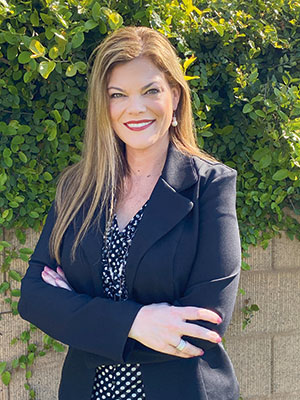Shawna Snyder, Avanti Restaurant Solutions
Shawna Snyder started in the industry nearly 30 years ago in a tiny, 2-person cafe.
 Shawna Snyder, Avanti Restaurant Solutions, Folsom, Calif.During college Snyder continued to work in restaurants as a server and a bartender. While working for Lyon’s Restaurant chain, the final die was cast — the one that would make Snyder a restaurant industry lifer. She was offered the chance to work in the chain’s management program. “It was then I learned how passionate I am about training and leading a team. It is really the steppingstone to someone’s success,” she recalls.
Shawna Snyder, Avanti Restaurant Solutions, Folsom, Calif.During college Snyder continued to work in restaurants as a server and a bartender. While working for Lyon’s Restaurant chain, the final die was cast — the one that would make Snyder a restaurant industry lifer. She was offered the chance to work in the chain’s management program. “It was then I learned how passionate I am about training and leading a team. It is really the steppingstone to someone’s success,” she recalls.
Snyder’s career path progressed; she worked with a variety of chains and their franchisees working on new restaurant builds, operational support, training, rollouts and more. Four years ago, though, the chain Snyder was working for announced plans to move its headquarters from California to another state. A seven-year company veteran, Snyder was invited to come along, but after serious consideration she decided it was time to try something new. At the same time, Avanti had an opening for a project manager, so she reached out to a former colleague to inquire about the job. “She told me I would love it, especially the culture, and I have been here ever since,” says Snyder, who would eventually be promoted to account manager in January 2019.
Q: How have chain restaurants evolved since you first started in the industry?
A: I specialize in the fast-casual world and those concepts are focusing heavily on third-party delivery. And, in today’s COVID-19 climate, third-party delivery is really all that is keeping our restaurants alive. But third-party was impactful in the fast-casual space even before the pandemic. We’ve needed to add a second makeline to help some customers because third-party delivery had been interfering with the in-store guest experience. It was causing chaos. So, we assisted in outlining what they needed on a second makeline to ensure the restaurants were in position to meet the needs of third-party delivery without compromising the experience for in-store guests. This includes going back to retrofit existing locations, and the second makeline is now part of new builds.
Q: What goes into a successful chain rollout of a new design or equipment?
A: It starts with not only listening to their needs but understanding them, too. For example, when building a second makeline, do you need the same dimensions as you do on the front-of-house pick-and-point line? That can be the difference between the chain requiring a custom piece of equipment or buying a standard item that can save them money. It’s about being a partner and not necessarily a salesman.
Q: Training is clearly a big part of your past. What role does it play in your current position?
A: I think training is part of what everyone should incorporate. I am on a company task force to initiate a whole corporate training program into our system. We get to start from ground zero, and that’s amazing. In this industry there is always something new. There is something old to learn from. There is something you never knew existed before. There is knowledge, experience and processes everywhere. We are going to integrate all these things into our training program to help engage our tribe for both personal and professional development.
Q: What goes into creating a good training program?
A: Knowledge, patience and an open mind. You can’t be so stuck in your ways and think that yours is the only right way. You must have your mind open to other ideas in order to train and have the best training program. Consistency is important, too. You must train on the same things across all teams, otherwise you have chaos.




